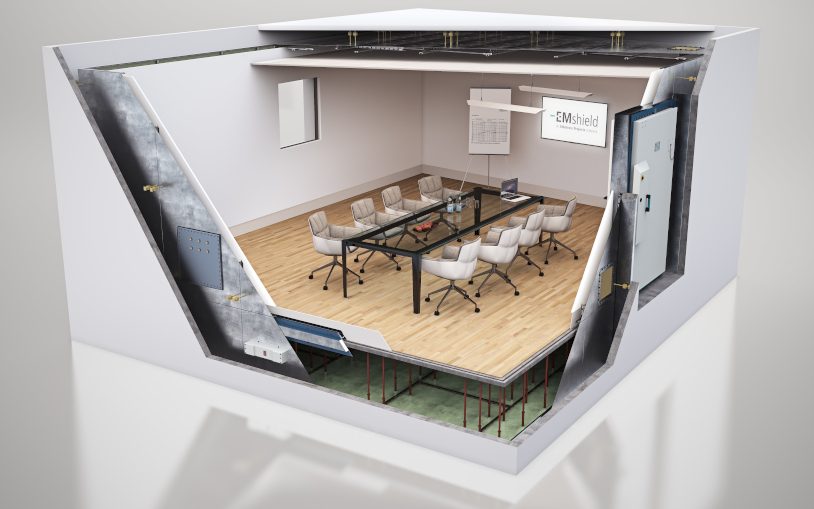Labs often need a room to be blocked off and shielded – whether for the research laboratory of an industrial company developing new products, or the monitoring rooms of a pharmaceutical company in which long-term studies are carried out to test the effectiveness of new drugs. Eavesdropping and the interception of sensitive data or information can be undesirable, but protection must ensure that measurements are not altered, which would produce falsified results. Due to the almost inexhaustible variety of rooms, including windows, built-in bathrooms and telecommunications equipment, which must function without interference in corresponding rooms, the room shielding system is particularly suitable for these applications.
Lab + Test

Solutions

Architectural room shielding
Eavesdropping protection is currently one of the main application areas of our ARCtec-Flex architectural room shielding system.
If electromagnetic room shielding can be easily processed, adapts to all room shapes and does not restrict the building physics, this area is known as architectural or integrated room shielding.
The main component of architectural room shielding is the special shielding material, which is so light that it does not require a complex supporting structure. It is breathable and can be treated with conventional floor and wall coverings. The installation is similar to that of normal wallpapers.
It is extremely important for user acceptance that such a room does not look different to conventional rooms. Installed by specialists, a shielding attenuation of up to 80 dB (factor 10,000) between 30 MHz and 6.0 GHz is guaranteed. As protection against eavesdropping on spoken conversations, an acoustic insulation and a special foil is installed on the windows for protection against lip reading.

Shielded cabins / modular shielding
Shielded cabins made of copper or sheet steel modules are used to meet the highest safety and electromagnetic shielding requirements. This guarantees shielding attenuation values of > 100 dB.
The options for architectural design are clearly limited here. These cabins are implemented as a room within the room, which means that it is not possible to include windows. The choice of doors, wall and floor coverings is also limited. These systems are particularly widely used in high-security zones in the public administration sector.
As protection against eavesdropping on spoken conversations, an acoustic insulation and a special foil is installed on the windows for protection against lip reading.

